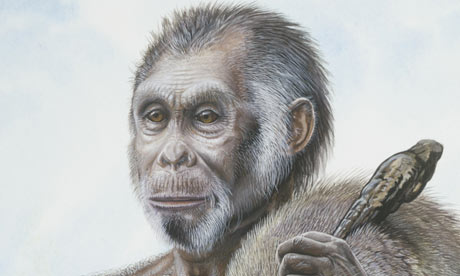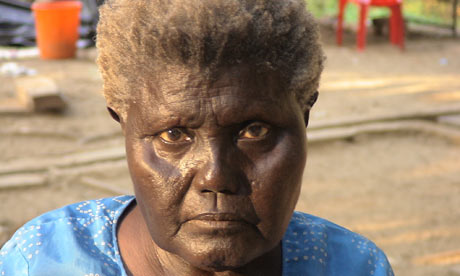


![]()
December 2006July 2007August 2007September 2007January 2008February 2008March 2008April 2008May 2008June 2008July 2008August 2008September 2008October 2008November 2008December 2008January 2009February 2009March 2009April 2009May 2009June 2009July 2009August 2009September 2009October 2009November 2009December 2009January 2010February 2010March 2010April 2010May 2010June 2010August 2010September 2010October 2010November 2010December 2010January 2011February 2011March 2011April 2011May 2011July 2011September 2011October 2011November 2011December 2011July 2012August 2012December 2012January 2013February 2013March 2013April 2013May 2013June 2013July 2013August 2013September 2013October 2013November 2013December 2013January 2014February 2014March 2014April 2014May 2014June 2014July 2014August 2014September 2014October 2014November 2014December 2014January 2015February 2015March 2015April 2015May 2015June 2015July 2015August 2015September 2015October 2015November 2015December 2015January 2016February 2016March 2016April 2016May 2016June 2016August 2016September 2016October 2016November 2016December 2016January 2017February 2017March 2017April 2017May 2017July 2017September 2017October 2017December 2017February 2018March 2018April 2018May 2018June 2018July 2018August 2018September 2018October 2018November 2018December 2018January 2019February 2019April 2019May 2019September 2019October 2019November 2019December 2019January 2020February 2020March 2020April 2020August 2020October 2020January 2024
Welcome to
History Buff, a blog for history lovers everywhere! History Buff brings
news stories about archaeology from around the world together on one site.
From finds in ancient Egypt to new discoveries in anthropology, History
Buff wants to know.


RSS: BLOG FEED
Subscribe to
Posts [Atom]
Logo designed by Shaun Venish
Blog designed by Mia Pearlman Design
Woman who found coin worth £2,000 in garden becomes first to be prosecuted for not reporting treasure
A woman who found a 700-year-old silver 'coin' whilst digging in her garden as a child has become the first in the country to be convicted of failing to hand in suspected treasure.
Read the rest on Daily Mail.Accidental Discovery Pieces Together Ancient Biblical Manuscript
Read the rest here.
Tyrannical English king 'buried in Scotland'
Read the rest here.
1,800-year-old Roman marble carving of the god Jupiter found at Fountains Abbey
Descartes Letter Found, Therefore It Is
It was the Great Train Robbery of French intellectual life: thousands of treasured documents that vanished from the Institut de France in the mid-1800s, stolen by an Italian mathematician. Among them were 72 letters by René Descartes, the founding genius of modern philosophy and analytic geometry.
Read the rest on the NYT.Researchers hold breath as they lift lid on history in quest for Archbishop Wichmann
Roger Boyes
The archbishop has aged well. After 800 years, a tomb believed to contain the remains of one of the key advisers to the Holy Roman Emperor Frederick Barbarossa was opened for the first time yesterday — revealing an astonishingly well-preserved skeleton with whisps of eyebrow hair, a trace of flesh and feet decked in stylish, gold brocaded sandals.
Read the rest here.Ring fort may have held Bronze Age sports arena
A MYSTERIOUS ring fort in Co Tipperary holds “massive potential for discoveries” according to archaeologists who have carried out the first survey of the site.
Huge New Dinosaur Found via "Mind-boggling" Skulls
Christine Dell'Amore
Four skulls of a giant new species of plant-eating dinosaur may give scientists a head start on understanding the biggest animals ever to have walked the Earth, a new study says. Read the rest on National Geographic.
Pictures: Shipwreck Discovery Yields Ancient Treasure
Gleaming where it sank almost 3,000 years ago, a golden bracelet from the Bronze Age marks the site of one of the world's oldest shipwrecks, recently discovered off the coast of the United Kingdom. At the time of the wreck, Rome had yet to be built, pharaohs still ruled Egypt, and Jesus Christ's birth was still centuries away.See the photos on National Geographic.
Newly Discovered Archaeological Sites In India Reveals Ancient Life
Read the rest here.
Pirate's head taken off again
Read the rest here.
History in the Remaking: A temple complex in Turkey that predates even the pyramids is rewriting the story of human evolution.
By Patrick Symmes
They call it potbelly hill, after the soft, round contour of this final lookout in southeastern Turkey. To the north are forested mountains. East of the hill lies the biblical plain of Harran, and to the south is the Syrian border, visible 20 miles away, pointing toward the ancient lands of Mesopotamia and the Fertile Crescent, the region that gave rise to human civilization. And under our feet, according to archeologist Klaus Schmidt, are the stones that mark the spot—the exact spot—where humans began that ascent.
Read the rest on Newsweek.First Minoan Shipwreck
Crete has seduced archaeologists for more than a century, luring them to its rocky shores with fantastic tales of legendary kings, cunning deities, and mythical creatures. The largest of the Greek islands, Crete was the land of the Minoans (3100-1050 B.C.), a Bronze Age civilization named after its first ruler, King Minos, the "master of the seas" who is said to have rid the waters of pirates. According to Thucydides, he also established the first thalassocracy, or maritime empire. The Minoans were renowned for their seafaring prowess, which opened trade routes with the powerful kingdoms of Egypt, Anatolia, and the Levant.
Read the rest in Archaeology Magazine.
How a hobbit is rewriting the history of the human race

A painting of what researchers believe Homo floresiensis may have looked like. Illustration: Peter Schouten (see his amazing wildlife artwork here)
It remains one of the greatest human fossil discoveries of all time. The bones of a race of tiny primitive people, who used stone tools to hunt pony-sized elephants and battle huge Komodo dragons, were discovered on the Indonesian island of Flores in 2004.
FOR THE FIRST TIME, KING TUT’S DNA IS MAPPED, HIS FAMILY IDENTIFIED, AND HIS SHORT LIFE INVESTIGATED
KING TUT UNWRAPPED is airing tonight at 8 PM (ET/PT) and Monday, February 22, at 8 PM (ET/PT).
Revealed: The evidence that might show Elizabeth I's 'lover' had wife killed so he could wed the Queen
Read the rest on the Daily Mail.
Unearthing the splendour of Ur in Iraq

With the country ravaged by war and strife since the 2003 US-led invasion that toppled Saddam Hussein, Baghdad's struggling government has had greater priorities than funding large-scale digs at Ur - the birth place of Abraham and one of the cradles of civilisation - where only small teams have been working since 2005.
Read the rest on The Telegraph.Archaeologists pinpoint long-disputed site of Battle of Bosworth
By Maev Kennedy
Archaeologists announced today that they have located not just the site of the Battle of Bosworth, but the spot where – on 22 August 1485 – Richard III became the last English king to die in battle when he was cut down by Tudor swords.
Primitive Humans Conquered Sea, Surprising Finds Suggest
Heather Pringle
It wasn't supposed to happen like this.
Two years ago a team of U.S. and Greek archaeologists were combing a gorge on the island of Crete (map) in Greece, hoping to find tiny stone tools employed by seafaring people who had plied nearby waters some 11,000 years ago.
Read the rest on National Geographic.Pieces of armor owned by ancient emperors unearthed
Read the rest on Breitbart.
The writing's on the wall: How cave drawings may have been Man's first attempts to write
By
They had previously been dismissed as little more than doodles, but these ancient dots and lines could be the very first attempts by Man to write.Read the rest on the Daily Mail.
Unmasked: The real faces of the crippled King Tutankhamun (who walked with a cane) and his incestuous parents

King Tut's grandmother Queen Tiye, the mother of Pharaoh Akhenaten.
by Claire Bates
King Tutankhamun was a hobbled, weak teenager with a cleft palate and club foot. And he probably has his parents to blame. For the mother and father of the legendary boy pharaoh were actually brother and sister.
Read the rest on the Daily Mail.Archaeologist: Royal Palace of Ebla, Living Archive of Syria's History

The importance of the Royal Palace of Ebla, in north Syria, lies in that it includes a room for cuneiform manuscripts, known as 'Ebla Archive' which stressed its importance as a political and economic metropolis in Bilad al-Cham besides that the Palace dates back to the Early Bronze Age 2400 BC.
Read the rest here.
Ghana dig reveals ancient society
Archaeologists have unearthed dozens of clay figures in Ghana, shedding light on a sophisticated society which existed before the arrival of Islam.
What are you doing on Sunday??????
The Discovery Channel was kind enough to show me the episode early, and let me tell you - it's one you don't want to miss!!
Dig finds medieval monk was living it up in Kilkenny 'pad'
MICHAEL PARSONS
ARCHAEOLOGISTS IN Kilkenny have discovered new evidence of the lavish lifestyle enjoyed by a medieval Irish monk.
3,000-year-old shipwreck shows European trade was thriving in Bronze Age
Read the rest on The Telegraph.
DNA Tests Reveal Mysteries of Boy-King Tut
The studies also disproved speculation that Tutankhamun and members of his family suffered from rare disorders that gave them feminine attributes and misshapen bones, including Marfan Syndrome, a connective tissue disorder that can result in elongated limbs.
Read the rest here.Skeleton of St Anthony goes on display to public more than 750 years after his death
Pilgrims are being given the chance to see the 13th Century remains of St Anthony which go on display in a glass case today in Italy. The display, which will last until Saturday will be in chapel of his tomb in Padua and marks the feast of the transfer of St Anthony, also known as the 'feast of the tongue'.
Scientist use DNA strand to uncover crucial details in a man believed to be 4,000 years old.
Breeding Ancient Cattle Back from Extinction
The only place to see an aurochs in nature these days? A cave painting. The enormous wild cattle that once roamed the European plains have been extinct since 1627, when the last survivor died in a Polish nature reserve. But this could soon change thanks to the work of European preservationists who are hoping they can make the great beast walk again.
Read the rest on Time Magazine.
Hellenistic Period tombs unearthed by torrential rainfall
Eight tombs dating to the Hellenist Period were partially revealed recently in the region of Gonous, Larissa prefecture, after flooding caused by heavy rainfall swept away a rural dirt road.
Read the rest here.Why Humans Walk 'Flat-Footed'
Cats and dogs trot around on their toes, as do many other mammals. So why do humans and other walk flat-footed? It is surprisingly energy efficient, a new study suggests.
Read the rest on Yahoo.
World's Biggest Snake Ate New Prehistoric Croc Species
Christine Dell'Amore
National Geographic News
Read the rest on National Geographic.
Archaeological 'Time Machine' Greatly Improves Accuracy of Early Radiocarbon Dating
ScienceDaily— Researchers at Queen's University have helped produce a new archaeological tool which could answer key questions in human evolution. The new calibration curve, which extends back 50,000 years, is a major landmark in radiocarbon dating -- the method used by archaeologists and geoscientists to establish the age of carbon-based materials.
Read the rest on Science Daily.Mythological love unearthed - Experts dig up chamber used by King Bana to hide his daughter
A secret chamber probably built by an Assam king to hide his lovelorn daughter from Krishna’s grandson has been dug up by archaeologists near Tezpur. The find, experts are saying, could be a confirmation of the legendary love story of Aniruddha, Krishna’s grandson, and princess Usha, daughter of King Bana.
Read the rest here.Archaeologists find Byzantine era road
By Kevin Flower
Jerusalem (CNN) -- Archaeologists working under the direction of the Israeli Antiquities Authority have uncovered a 1,500-year-old road running through the center of Jerusalem's Old City.
Read the rest on CNN.Should We Clone Neanderthals?
If Neanderthals ever walk the earth again, the primordial ooze from which they will rise is an emulsion of oil, water, and DNA capture beads engineered in the laboratory of 454 Life Sciences in Branford, Connecticut. Over the past 4 years those beads have been gathering tiny fragments of DNA from samples of dissolved organic materials, including pieces of Neanderthal bone. Genetic sequences have given paleoanthropologists a new line of evidence for testing ideas about the biology of our closest extinct relative.
Read the rest on Archaeology.org.
Grand Canyon archaeologists surprised at findings
Flagstaff, AZ -- Grand Canyon archaeologist Ian Hough reported to a crowd of local archaeologists, Grand Canyon hikers and enthusiasts that his team was surprised by artifacts and features recently unearthed at the bottom of the Grand Canyon.
Read the rest on the Examiner.
HISTORY'S HORRORS IN THE PRESENT: Man goes undercover to combat child sex slavery
Phnom Penh, Cambodia (CNN) -- Aaron Cohen first met Jonty Thern and her older sister, Channy, in 2005 while singing in a karaoke bar in Battambang, Cambodia. He has come back to see them every year since.
Read the rest on CNN.
A Tree Carving in California: Ancient Astronomers?
Though local lore held that the so-called "scorpion tree" had been the work of cowboys, paleontologist Rex Saint Onge immediately knew that the tree was carved by Indians when he stumbled upon it in the fall of 2006.
Read the rest on Time.
Professors make Jurassic discovery
Are they birds or dinosaurs? This question has puzzled scientists for almost two decades after the discovery of a bizarre, bird-like family of dinosaurs called Alvarezsauridea, first found in the 1990s.
14th century Narasimha temple found
Read the rest on Hindu.com.
Bog woman given a face
A 2000-year-old body found in a northeastern Jutland bog has received a makeover – coroner style The female known as the Auning Woman, found in a northeastern Jutland bog 1886, and housed at the Museum for Culture and History in...
Read the rest here.Ancient tooth enamel defects linked with premature death
Read the rest here.
Ancient Mongolian Tomb Holds Skeleton of Western Man
By Bruce Bower
Dead men can indeed tell tales, but they speak in a whispered double helix. Consider an older gentleman whose skeleton lay in one of more than 200 tombs recently excavated at a 2,000-year-old cemetery in eastern Mongolia, near China's northern border.
Ancient tribal language becomes extinct as last speaker dies

Boa Sr, the last speaker of the Bo language of the Andaman Islands, has died. Photograph: Alok Das/Survival/Survival
The last speaker of an ancient tribal language has died in the Andaman Islands, breaking a 65,000-year link to one of the world's oldest cultures.
Read the rest on The Guardian.Bronze brooch rises from the ashes
ANNE LUCEY
A 1,400-YEAR-OLD brooch dating from the early Christian period has been discovered in the remnants of a turf fire in a range in north Kerry.
King, Sultan, pope crack down on smoking
More and more cities and states around the country are banning smoking in public places, much to the chagrin of smokers. But opposition to smoking has been around almost as long as smoking itself, and some of the historical measures to curb lighting up might surprise you.
1. The Pope cracks down on smoke
Pope Urban VII's papacy began on September 15, 1590. It ended with his death from malaria less than two weeks later.
Read the rest on CNN.DNA Testing on 2,000-Year-Old Bones in Italy Reveal East Asian Ancestry
Read the rest on Science Daily.
Excavation and restoration on the Avenue of Sphinxes
Could museum's gold be from ancient Troy?
The scientist had traveled from Germany to examine the ancient items that lay before him on the University of Pennsylvania laboratory table, and he was dazzled. Earrings with cascades of golden leaves. Brooches adorned with tightly coiled spirals. A necklace strung with hundreds of gold ringlets and beads.
Early draft of the Constitution found in Phila.
Researcher Lorianne Updike Toler was intrigued by the centuries-old document at the Historical Society of Pennsylvania.
Read the rest here.Archaeologists unearth Iron Age settlement in Kent
The remains of an Iron Age settlement have been unearthed by archaeologists working along the route of a new £1.3m water pipeline in Kent.
Lifestyles of the rich and famous... Egyptians
The rich and famous people of ancient Egypt lived a decadent lifestyle with fine wine, sex, high fashion, and plenty of partying. How do they compare with their equivalents today - the modern western celebrity set? Read the rest on The Independent.
An ancient Roman temple, discovered in the chancel of the church of Sant Feliu Girona.
Read the rest here.
Pictures: "Mythical" Temple Found in Peru
See the photos on National Geographic.











